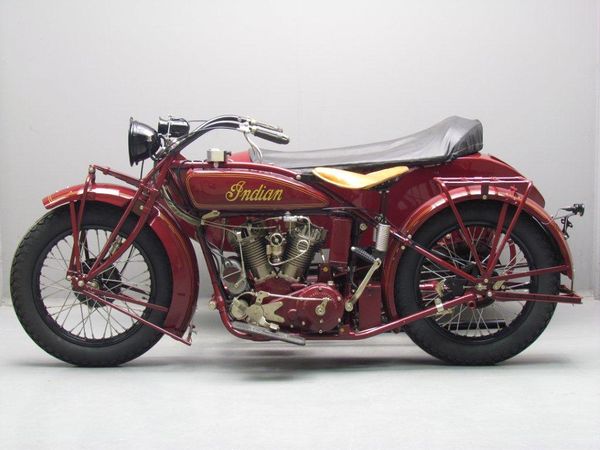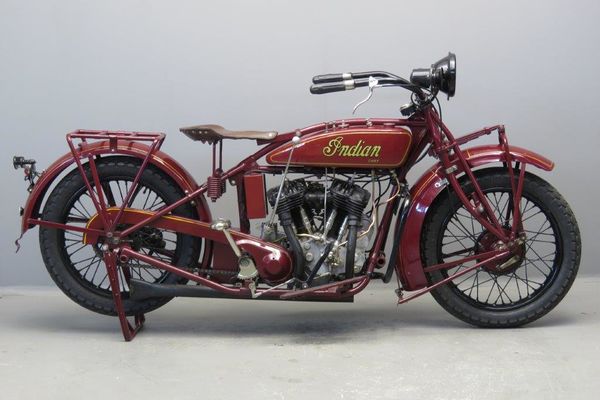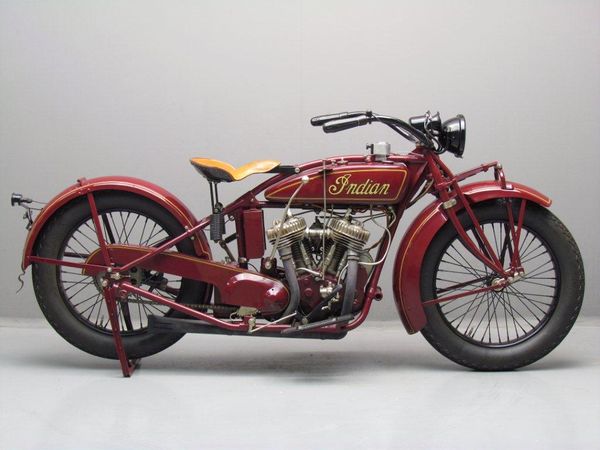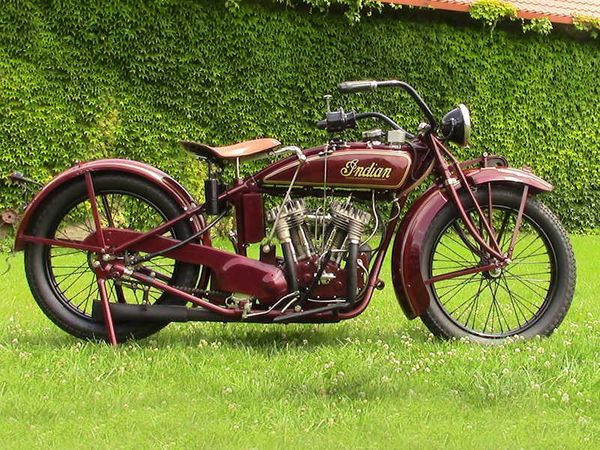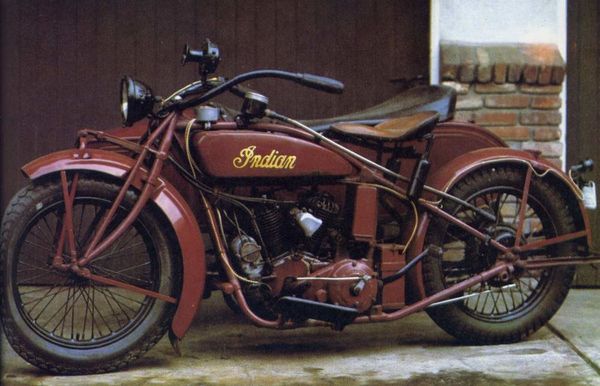Indian Big Chief
Introduced in 1920, the 37 cu. in. Scout was a brilliant new design that resulted in record sales for Indian. To capitalize on this sales success, a larger capacity model was released in 1922, the 61 cu. in. Chief. To compete with the Harley-Davidson big v-twins the 73 cu. in. Big Chief was announced the following year. With a new frame complete with sidecar attachment lugs, Indian finally had a versatile touring model that could compete with anything on the market.
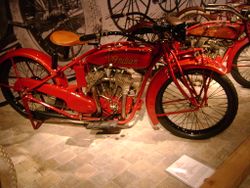 |
|
| Indian Big Chief | |
| Manufacturer | |
|---|---|
| Production | 1923 |
| Class | Classic |
| Engine | Air-cooled, four-stroke, twin cylinder |
| Bore / Stroke | 83.8mm x 83.8mm |
| Horsepower | 24.0 HP (17.9 KW) @ 3000RPM |
| Fuel System | Carburetor |
| Transmission | Gear box: 3-Speed, manual Final Drive: Chain |
| Suspension | Front: Trailing fork Rear: Hardtail |
| Brakes | Front: Drum Rear: Drum |
| Wheelbase | 60.51 inches (1537 mm) |
| Weight | |
| Manuals | Service Manual |
The Indian Big Chief was a Air-cooled, four-stroke, twin cylinder Classic motorcycle produced by Indian in 1923. Claimed horsepower was 24.0 HP (17.9 KW) @ 3000 RPM.
Engine[edit | edit source]
A 83.8mm bore x 83.8mm stroke result in a displacement of just 1213.0 cubic centimeters.
Drive[edit | edit source]
The bike has a 3-Speed, manual transmission. Power was moderated via the Wet multi discs.
Chassis[edit | edit source]
Stopping was achieved via Drum in the front and a Drum in the rear. The front suspension was a Trailing fork while the rear was equipped with a Hardtail. The wheelbase was 60.51 inches (1537 mm) long.
1923 - 1928 Indian Big Chief[edit | edit source]
The 1923 Indian Big Chief was one of the most powerful and fastest machines in its time, thanks to its air-cooled, four-stroke, 1213 cc, twin cylinder engine, which can produce 24 hp (17.9 KW) and helps this two-wheeler reach its top speed of 90 mph. features included laced wheels, a hardtail rear suspension, a single seat, pulled-back handlebars and rider floorboards plus large fenders.
